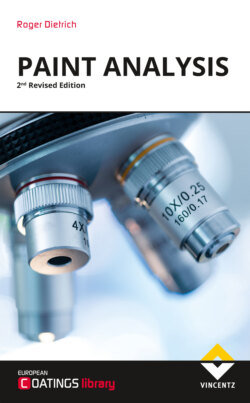Читать книгу Paint Analysis - Roger Dietrich - Страница 45
На сайте Литреса книга снята с продажи.
3.6Microsampling
ОглавлениеIn coating analysis there are often very small features like crater, paint spots, overspray spots, particle and fibre inclusions and so on. This offers a few challenges with respect to sampling methods. Sometimes a particle of the size of a few tens of micrometres have to be separated and fixed for the analysis.
One sampling technique is a scalpel wedge cut of paint spots. This requires a binocular microscope and a fresh, very sharp scalpel blade:
There are two options for cutting the spot. One is a wedge cut with the tip sectioning the speck and the layers underneath with an angle of approximately 45°. The second is a top cut parallel to the coating surface without touching the layers underneath. With both methods the particle sectioned from the sample can be saved for further analysis (e.g. infrared microscopy) on self-adhesive tape
Figure II.23: Scalpel wedge or top cut of a paint spot
If it comes to adhesion defects the interface between the coating and the substrate will have to be analysed by very sensitive methods like TOF-SIMS for trace contaminations. This means the backside of a paint chip (the side that has been sitting on the substrate) and the surface underneath have to be sampled without contaminating the areas. This can be done by lifting one edge of a loose paint chip and pulling it off with tweezers. It is important that, even with a thoroughly cleaned tweezers, the backside of the paint chip must not be touched except for the edge which is used to pull the paint chip. This operation should have been performed under binoculars.
Figure II.24: Sampling a paint chip in case of adhesion deficiencies using tweezers
